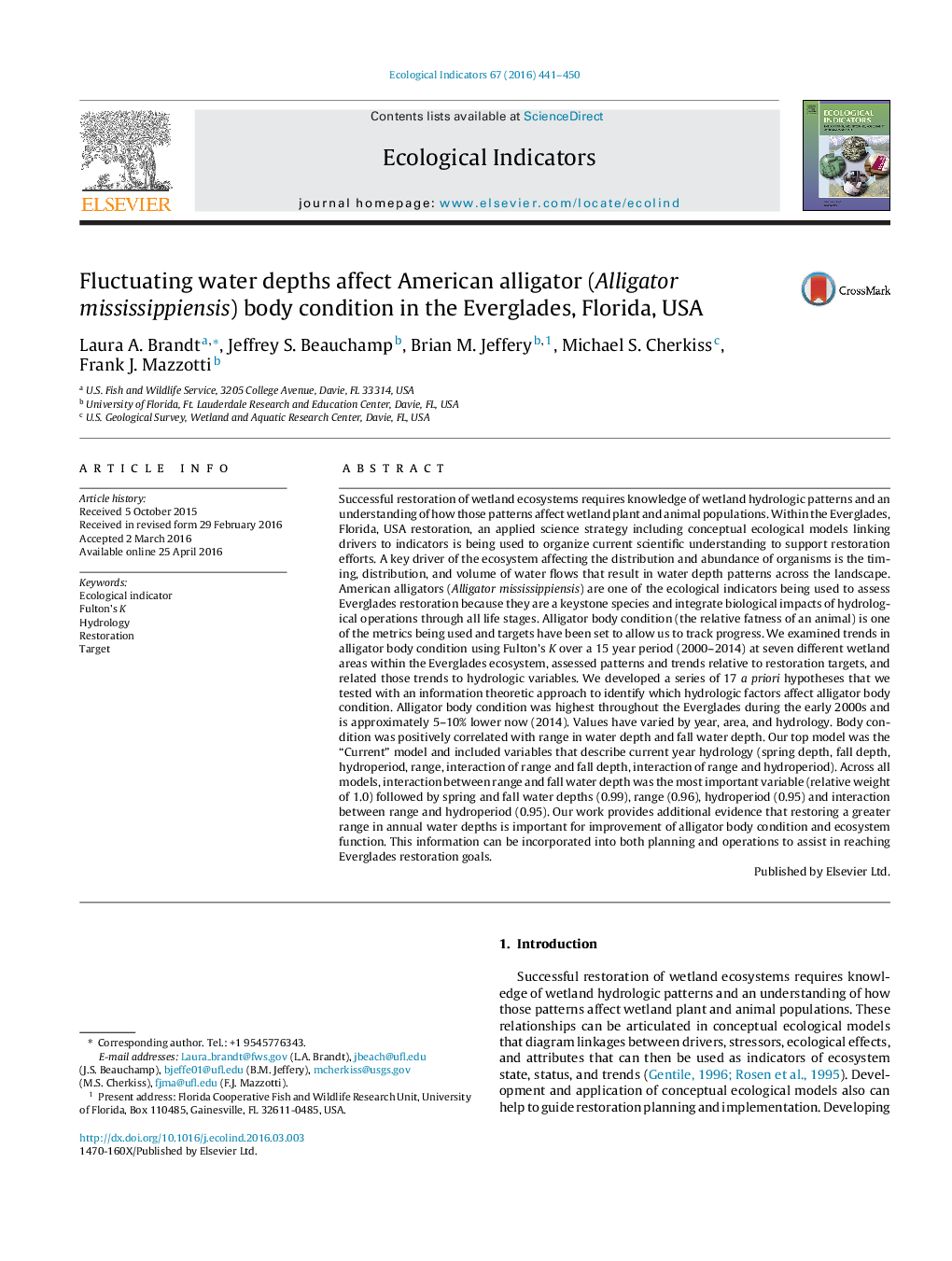| Article ID | Journal | Published Year | Pages | File Type |
|---|---|---|---|---|
| 4372890 | Ecological Indicators | 2016 | 10 Pages |
•We followed trends in alligator body condition in the Everglades over 15 years.•Body condition of Everglades alligators is 5–10% lower than in the early 2000s.•Alligator body condition varied by area and year and was correlated with hydrology.•Fluctuation in water depth is important for improving alligator body condition.
Successful restoration of wetland ecosystems requires knowledge of wetland hydrologic patterns and an understanding of how those patterns affect wetland plant and animal populations. Within the Everglades, Florida, USA restoration, an applied science strategy including conceptual ecological models linking drivers to indicators is being used to organize current scientific understanding to support restoration efforts. A key driver of the ecosystem affecting the distribution and abundance of organisms is the timing, distribution, and volume of water flows that result in water depth patterns across the landscape. American alligators (Alligator mississippiensis) are one of the ecological indicators being used to assess Everglades restoration because they are a keystone species and integrate biological impacts of hydrological operations through all life stages. Alligator body condition (the relative fatness of an animal) is one of the metrics being used and targets have been set to allow us to track progress. We examined trends in alligator body condition using Fulton's K over a 15 year period (2000–2014) at seven different wetland areas within the Everglades ecosystem, assessed patterns and trends relative to restoration targets, and related those trends to hydrologic variables. We developed a series of 17 a priori hypotheses that we tested with an information theoretic approach to identify which hydrologic factors affect alligator body condition. Alligator body condition was highest throughout the Everglades during the early 2000s and is approximately 5–10% lower now (2014). Values have varied by year, area, and hydrology. Body condition was positively correlated with range in water depth and fall water depth. Our top model was the “Current” model and included variables that describe current year hydrology (spring depth, fall depth, hydroperiod, range, interaction of range and fall depth, interaction of range and hydroperiod). Across all models, interaction between range and fall water depth was the most important variable (relative weight of 1.0) followed by spring and fall water depths (0.99), range (0.96), hydroperiod (0.95) and interaction between range and hydroperiod (0.95). Our work provides additional evidence that restoring a greater range in annual water depths is important for improvement of alligator body condition and ecosystem function. This information can be incorporated into both planning and operations to assist in reaching Everglades restoration goals.
